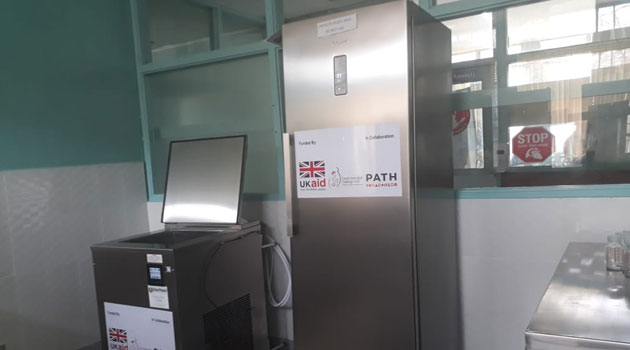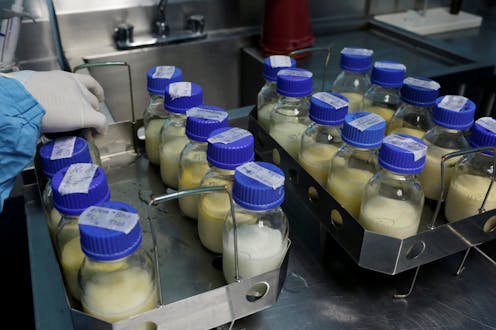Mother’s milk is hailed for helping a baby’s immune system. Nairobians netizens have had varied reactions to the launch of Pumwani milk bank. News of a milk bank has had some people reluctant about the noble initiative simply saying they don’t understand how it will work.

The bank will receive and pasteurize breast milk from donors that will be given to premature and sick newborns who are unable to access their mothers’ milk.

Would agree your child to take breast milk from another Mother? A question that one might not be quick to answer since the options might be limited. There is hope for new born babies who unfortunately might lose their mothers or she is unwell or the child is abandoned.
A local daily sought to clear the air and understand the ‘chemistry’ behind the project and what it means to mothers and their babies. Mary Agnes is aware of the milk bank and she has a set of queries.

“My auntie, who had a baby had issues with lactating. When she could finally breast feed, the milk was in excess and so she had to store it in a bottle since she had no refrigerator. But it would turn its colour at some point. Is this not likely to happen?” she asked.
But not all mothers have the same thoughts as Agnes, and they fully support the scheme and wouldn’t mind donating. One of the supporting mothers is Anastasia Mwende, she said the project will help a lot of mothers.

“When I gave birth to my daughter it took a while before I could lactate. The struggle was real, as a mother I felt so much pain as I watched her yearn for something to feed on. This is why I support this because I know the suffering.” Mwende said.
A section of the mothers have their doubts, but authorities say they will be cleared once the milk bank is completely functional. Faith Njeru a nurse in the new unit narrates the process of donating to storing the milk.

She said that the first process is you would have to be a patient from Pumwani Hospital to be a registered donor and for the baby to be provided with the milk. Njeru explains that one has to have surplus milk to donate.
When the mothers are done donating they go for a counselling session where they are enlightened more on why it is important for them to help. After the counselling the mother is taken for screening to identify if the milk will be of help to the infants for their growth.

“Breast milk provides nutrients and immune factors that protect the baby against infections, allergies and illnesses.” A sample of milk is taken from the mother then taken to the laboratory where it is tested using a high-tech machine that finds any micro-organisms.
If the breast milk is found negative this is a

During this process the milk is already in the freezer to prevent it from going bad. After the pasteurizing process is over, a sample of milk is collected from the end product for more lab test to be certain the milk is free from any micro-organisms.
“The milk is stored in freezers at low temperatures and can be stored for a period of six months only and still help in the growth of the infants,” she added.
The launch of the milk bank at Pumwani is a great relief to mothers and families who had lost hope in breastfeeding their young ones. Over 500 human milk banks have been established in more than 37 countries around the world including Brazil, South Africa, India, Canada, Japan, and France, according to World Health Organizations (WHO).